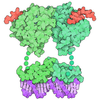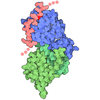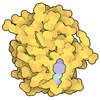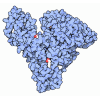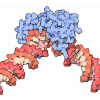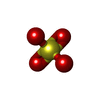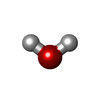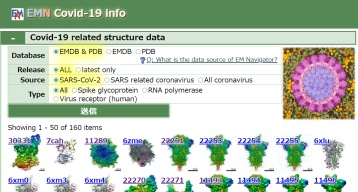Entry Database : PDB / ID : 3ipuTitle X-ray structure of benzisoxazole urea synthetic agonist bound to the LXR-alpha Nuclear receptor coactivator 1 Oxysterols receptor LXR-alpha Keywords / / / / / / / / / / / / / / / / / / / / Function / homology Function Domain/homology Component
/ / / / / / / / / / / / / / / / / / / / / / / / / / / / / / / / / / / / / / / / / / / / / / / / / / / / / / / / / / / / / / / / / / / / / / / / / / / / / / / / / / / / / / / / / / / / / / / / / / / / / / / / / / / / / / / / / / / / / / / / / / / / / / / / / / / / / / / / / / / / / / / / / / / / / / / / / / / / / / / Biological species Homo sapiens (human)Method / / Resolution : 2.4 Å Authors Fradera, X. / Vu, D. / Nimz, O. / Skene, R. / Hosfield, D. / Wijnands, R. / Cooke, A.J. / Haunso, A. / King, A. / Bennet, D.J. ...Fradera, X. / Vu, D. / Nimz, O. / Skene, R. / Hosfield, D. / Wijnands, R. / Cooke, A.J. / Haunso, A. / King, A. / Bennet, D.J. / McGuire, R. / Uitdehaag, J.C.M. Journal : J.Mol.Biol. / Year : 2010Title : X-ray structures of the LXRalpha LBD in its homodimeric form and implications for heterodimer signaling.Authors : Fradera, X. / Vu, D. / Nimz, O. / Skene, R. / Hosfield, D. / Wynands, R. / Cooke, A.J. / Haunso, A. / King, A. / Bennett, D.J. / McGuire, R. / Uitdehaag, J.C. History Deposition Aug 18, 2009 Deposition site / Processing site Revision 1.0 Jun 2, 2010 Provider / Type Revision 1.1 Jul 13, 2011 Group Revision 1.2 Feb 21, 2024 Group / Database references / Derived calculationsCategory chem_comp_atom / chem_comp_bond ... chem_comp_atom / chem_comp_bond / database_2 / pdbx_struct_special_symmetry / struct_ref_seq_dif / struct_site Item _database_2.pdbx_DOI / _database_2.pdbx_database_accession ... _database_2.pdbx_DOI / _database_2.pdbx_database_accession / _struct_ref_seq_dif.details / _struct_site.pdbx_auth_asym_id / _struct_site.pdbx_auth_comp_id / _struct_site.pdbx_auth_seq_id Revision 1.3 Apr 3, 2024 Group / Category
Show all Show less
 Yorodumi
Yorodumi Open data
Open data Basic information
Basic information Components
Components Keywords
Keywords Function and homology information
Function and homology information Homo sapiens (human)
Homo sapiens (human) X-RAY DIFFRACTION /
X-RAY DIFFRACTION /  MOLECULAR REPLACEMENT / Resolution: 2.4 Å
MOLECULAR REPLACEMENT / Resolution: 2.4 Å  Authors
Authors Citation
Citation Journal: J.Mol.Biol. / Year: 2010
Journal: J.Mol.Biol. / Year: 2010 Structure visualization
Structure visualization Molmil
Molmil Jmol/JSmol
Jmol/JSmol Downloads & links
Downloads & links Download
Download 3ipu.cif.gz
3ipu.cif.gz PDBx/mmCIF format
PDBx/mmCIF format pdb3ipu.ent.gz
pdb3ipu.ent.gz PDB format
PDB format 3ipu.json.gz
3ipu.json.gz PDBx/mmJSON format
PDBx/mmJSON format Other downloads
Other downloads 3ipu_validation.pdf.gz
3ipu_validation.pdf.gz wwPDB validaton report
wwPDB validaton report 3ipu_full_validation.pdf.gz
3ipu_full_validation.pdf.gz 3ipu_validation.xml.gz
3ipu_validation.xml.gz 3ipu_validation.cif.gz
3ipu_validation.cif.gz https://data.pdbj.org/pub/pdb/validation_reports/ip/3ipu
https://data.pdbj.org/pub/pdb/validation_reports/ip/3ipu ftp://data.pdbj.org/pub/pdb/validation_reports/ip/3ipu
ftp://data.pdbj.org/pub/pdb/validation_reports/ip/3ipu Links
Links Assembly
Assembly
 Components
Components Homo sapiens (human) / Gene: LXRA, NR1H3 / Plasmid: pSX29 / Production host:
Homo sapiens (human) / Gene: LXRA, NR1H3 / Plasmid: pSX29 / Production host: 
 X-RAY DIFFRACTION / Number of used crystals: 1
X-RAY DIFFRACTION / Number of used crystals: 1  Sample preparation
Sample preparation ROTATING ANODE / Type: RIGAKU MICROMAX-007 HF / Wavelength: 1.5418 Å
ROTATING ANODE / Type: RIGAKU MICROMAX-007 HF / Wavelength: 1.5418 Å Processing
Processing MOLECULAR REPLACEMENT
MOLECULAR REPLACEMENT Movie
Movie Controller
Controller









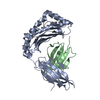

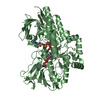
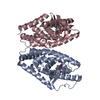

 PDBj
PDBj
